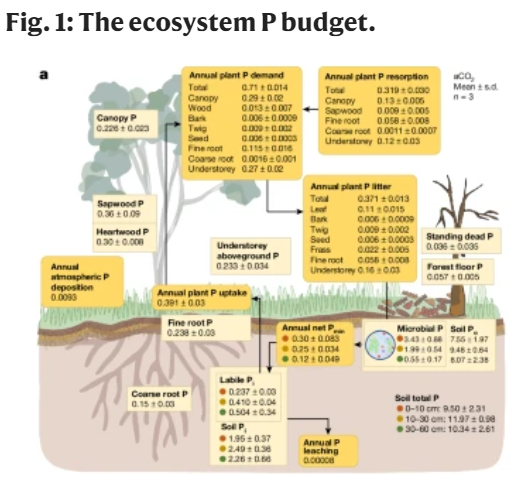NATURE Published:
Abstract
The capacity for terrestrial ecosystems to sequester additional carbon (C) with rising CO2 concentrations depends on soil nutrient availability1,2. Previous evidence suggested that mature forests growing on phosphorus (P)-deprived soils had limited capacity to sequester extra biomass under elevated CO2 (refs. 3,4,5,6), but uncertainty about ecosystem P cycling and its CO2 response represents a crucial bottleneck for mechanistic prediction of the land C sink under climate change7. Here, by compiling the first comprehensive P budget for a P-limited mature forest exposed to elevated CO2, we show a high likelihood that P captured by soil microorganisms constrains ecosystem P recycling and availability for plant uptake. Trees used P efficiently, but microbial pre-emption of mineralized soil P seemed to limit the capacity of trees for increased P uptake and assimilation under elevated CO2 and, therefore, their capacity to sequester extra C. Plant strategies to stimulate microbial P cycling and plant P uptake, such as increasing rhizosphere C release to soil, will probably be necessary for P-limited forests to increase C capture into new biomass. Our results identify the key mechanisms by which P availability limits CO2 fertilization of tree growth and will guide the development of Earth system models to predict future long-term C storage.
